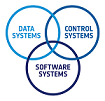Speaker
Description
PILOT (Precise and Intelligent Landing using On-board Technologies) is a European system that is designed to be used for precise and safe landings on the moon surface, currently in C/D1 development phase. The system is scheduled to be integrated onboard the Russian Luna-Resource-1 lander (Luna-27 mission – scheduled for launch in 2025) as part of its functional avionics, with the main goal of improving the soft landing performance, safety and ultimately validating in-flight the system for future missions.
PILOT is composed of three hardware elements (Camera Optical Unit - COU, LIDAR, Landing Processing Unit - LPU) and two functions directly related to the landing phase (Vision-Based Navigation - VBN and Hazard Detection and Avoidance - HDA). From the perspective of avionics, PILOT has recently passed a series of maturity gates. The programme of qualification of the COU was anticipated to secure a flight demonstration (PILOT-D) onboard Luna-25 (due for May 2022), significantly derisking the PILOT development though a collection of lessons-learned. With a view to perform the HDA function within the imposed programmatic constraints, a new LIDAR was selected for phase C, having a higher TRL and a more extensive flight heritage with rendez-vous missions, while also being sufficiently robust to be adapted to a moon landing mission with minimum modifications and less programmatic risks. For the VBN function, a transition was made to a full software solution, following thorough investigations on other potential solutions like hardware/software partitioning using FPGA. The full software solution implements state-of-the-art image processing algorithms, tested in the scope of the GENEVIS activity. The LPU design has also evolved along the project, currently materialising a multi-core architecture in the shape of the GR740 Quad-Core LEON4 processor from Gaisler. Having a multicore architecture has objective advantages, among which the possibility to run the VBN and HDA functions with the required real-time performances while maintaining the adequate processing load margins. The VBN function will also be tested before flight using real images from the PILOT-D COU, a major step of technological maturity. Post-flight analyses will not only address the replay of the actual Luna-27 descent and landing GNC scenario, but the moon images acquired during flight will also serve the validation of visual navigation algorithm variants for future lunar exploration missions.
In terms of challenges, a number of areas have proved demanding. For the validation approach, two different strategies are combined: open-loop validation in Europe and closed loop in Russia, adding to the overall complexity and imposing some constraints on the ESA-ROSCOSMOS cooperation. For the HDA function, some optimisations are still to be implemented, requiring the support of PI and scientists, so as to confirm the specified performances over the moon terrain at the South pole. Given the original purpose of the project, i.e. reusability, a challenging task is to keep the development of the system affordable and robust, in order to be used on other landing platforms/mission (e.g. EL3) with moderate adaptation efforts. Lastly, the NewSpace paradigm has shifted the emphasis on the commercial aspect, and space exploration is also part of it. In this context, PILOT ambitions to have its share in setting the standards of moon robotic exploration by putting ESA turn-key automatic landing solutions on the commercial market, seizing opportunities broadly in the international community

